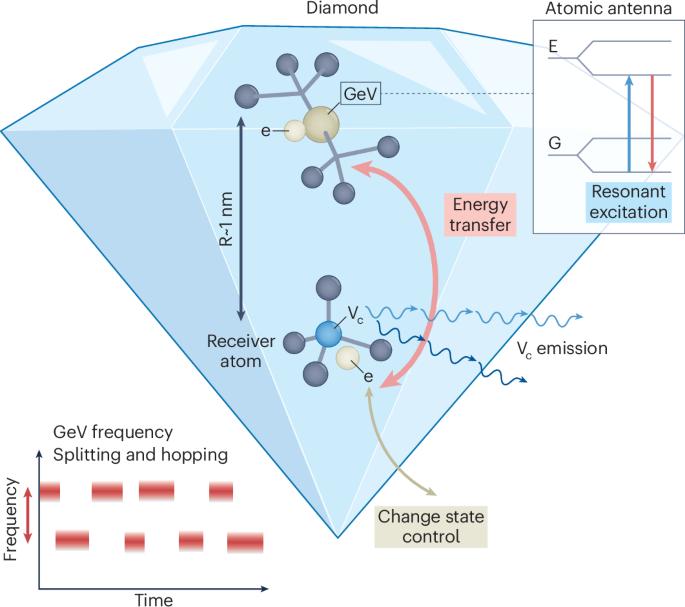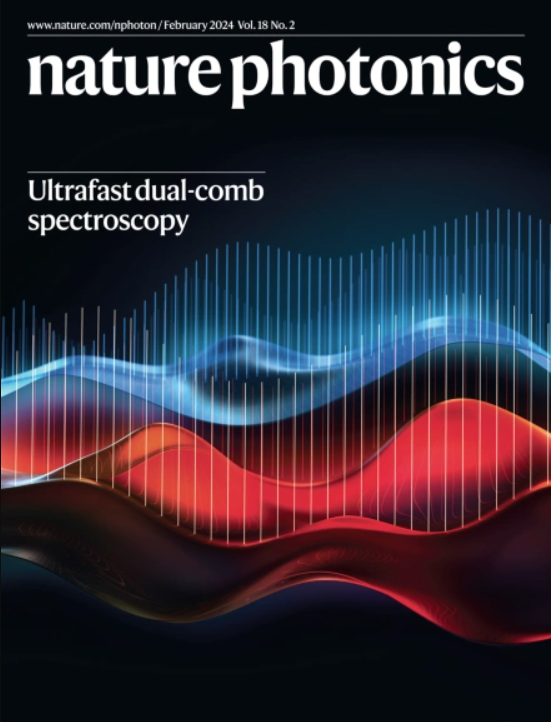钻石色彩中心实现了原子光学天线
IF 32.3
1区 物理与天体物理
Q1 OPTICS
引用次数: 0
摘要
光学纳米天线的场增强受制于材料和尺寸损失。现在,研究人员利用在金刚石中受控形成的孤立锗空位色心制造出了一种原子天线,它能实现巨大的近场光学增强,并能探测和控制附近的电荷,诱导能量转移。本文章由计算机程序翻译,如有差异,请以英文原文为准。


Diamond colour centre enables an atomic optical antenna
Optical nanoantenna field enhancement is hampered by material- and size-dependent losses. Researchers have now made an atomic antenna using the controlled formation of an isolated germanium vacancy colour centre in diamond, which enables giant near-field optical enhancement and which can detect and control nearby charges and induce energy transfer.
求助全文
通过发布文献求助,成功后即可免费获取论文全文。
去求助
来源期刊

Nature Photonics
物理-光学
CiteScore
54.20
自引率
1.70%
发文量
158
审稿时长
12 months
期刊介绍:
Nature Photonics is a monthly journal dedicated to the scientific study and application of light, known as Photonics. It publishes top-quality, peer-reviewed research across all areas of light generation, manipulation, and detection.
The journal encompasses research into the fundamental properties of light and its interactions with matter, as well as the latest developments in optoelectronic devices and emerging photonics applications. Topics covered include lasers, LEDs, imaging, detectors, optoelectronic devices, quantum optics, biophotonics, optical data storage, spectroscopy, fiber optics, solar energy, displays, terahertz technology, nonlinear optics, plasmonics, nanophotonics, and X-rays.
In addition to research papers and review articles summarizing scientific findings in optoelectronics, Nature Photonics also features News and Views pieces and research highlights. It uniquely includes articles on the business aspects of the industry, such as technology commercialization and market analysis, offering a comprehensive perspective on the field.
 求助内容:
求助内容: 应助结果提醒方式:
应助结果提醒方式:


